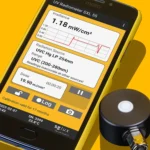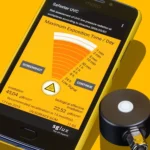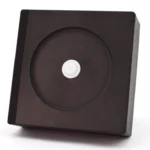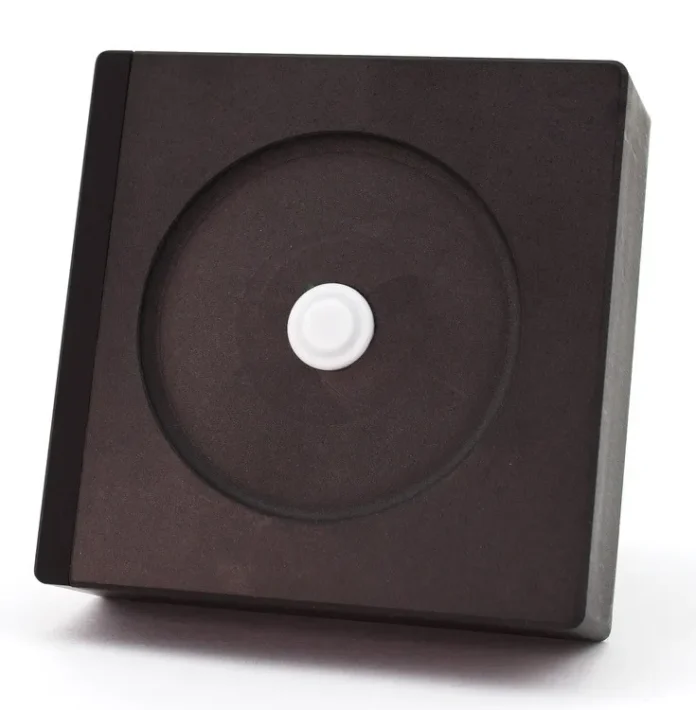By Tilman Weiss, sglux, and Fred Perry, Boston Electronics
Irradiance is the term for the optical energy falling on a surface in units of watts per unit area. In the measurement and control of light for purposes of disinfecting or curing a surface or a volume, usually not only the total optical energy but more specifically the energy within a defined spectral interval is required. The wavelength interval is a specific characteristic of the material or process being irradiated. For example, germs may need to be irradiated at 250 nm to 280 nm to be killed and may be relatively unaffected by the 390 nm energy that cures a coating. In consequence, it is spectrally weighted irradiance (energy falling on the surface of interest within the spectral band that creates the desired result) in watts per spectral bandwidth unit per unit area that needs to be measured.
Precise measurement of spectrally weighted irradiance is essential for the controlled and efficient use of UV radiation in the disinfection of surfaces, air and entire rooms, or curing coatings or volumes of photosensitive material. In addition, suitable measurement technology is required to evaluate and control these processes in terms of occupational health and safety. The detectors used for these applications must be able to measure very low levels of UV radiation and evaluate their harmful effects. For process control, detectors are used at higher irradiance levels. For these different requirements, digital measuring probes with application and emitter-specific calibrations, both wired and as Wi-Fi versions, are available.
However, it needs to be mentioned that due to limited dynamic range a single sensor cannot be used to monitor the sterilization process and to ensure workplace safety. This usually requires two different sensors or a sensor with different switchable gain values.
Digital Probes – Probes with Memory

Digital probes have advantages over the prior generation of analog meters. In addition to the conversion of analog measurement signals into digital signals, which can allow immediate closed-loop process adjustment, the properties of the probes – calibration, identification, personality – can be stored locally in on-board memory of the probe. The probes then know what they can measure. With on-board memory comes another important feature – the ability to enter several different calibration sets in the probe, as it is only through calibration that a probe becomes a radiometer. A calibration set consists of a combination of calibration factor, radiation source and possibly a weighting function. Author One’s company uses an open ModBus protocol for communication with the probes, so that the user can access all information stored in the probe in addition to the measured values (i.e., also can carry out calibration work himself, for example). For this, the company produces calibration instruments with accuracy traceable to the German national standards laboratory Physikalisch-Technische-Bundesanstalt (PTB). These new instruments are “UV-REF-LEDs.”
Traceable Calibration – UV Emitter and Sensor Form a Single Unit

Probes usually are calibrated using the substitution method. The irradiance of a UV emitter is measured using a spectroradiometer calibrated traceable to national standards and the probe to be calibrated is measured at the same position. Traceability is carried out via two emitter transfer standards at Author One’s company – a deuterium emitter for the UV range 200 nm to 400 nm and a filament lamp for the range 250 nm to 1100 nm – which are calibrated at the PTB on the national primary standard for spectral irradiance. The spectroradiometer is calibrated on these transfer standards to measure the spectral
irradiance of a UV lamp. To determine the integral irradiance measured by the probe, the spectral irradiance is integrated over the sensitivity range of the probe. The calibration therefore only applies to the pair of spectral emission of the UV emitter and spectral sensitivity of the sensor. The calibration must be carried out with the same radiation source as is used for measurement in the intended application.
Smartphone App Enables Calibration Set Access
Radiometers usually consist of a probe and a display unit. With the development of a free UV radiometer smartphone app for Android systems, a UV radiometer with an intuitive graphical user interface (GUI) was created to enable access to the different calibration sets in the probe. This allows a sensor to be used on different UV lamps or to measure different weighted irradiance levels on a UV source. One common example might be the measurement of UV-C low-pressure lamps and UV-C LEDs with different peak wavelengths. It is important to note that multiple calibrations can be valid only when no light of a wavelength not covered by the calibration set being used is present.
In addition to displaying the spectral irradiance and its progress over time, the app enables dose measurement (spectral irradiance integrated over time) and data recording (logging). The recorded data can be exported to a PC as a csv file if required.
User-Friendly Risk Assessment
If harmful UV radiation can occur at the workplace, a risk assessment should be carried out. The type, scope and measurement procedure are determined by the relevant laws, occupational health and safety regulations. Although conventional radiometers can provide the basic values required to determine a permissible maximum daily exposure duration or to define protective measures, the protective measures derived from them often are difficult to understand for those who are untrained in the use of optical measuring devices. A digital probe and the radiometer app makes it possible not only to take into account the effective limits described in the respective regulations, but it also can suggest the measurements specified in the regulation depending on the weighted measured value and detect incorrect measurements.

Measuring devices available from Author Two’s company can evaluate UV radiation in accordance with “Directive 2006/25/EC of the European Parliament and of the Council on the minimum health and safety requirements regarding the exposure of workers to the risks arising from artificial optical radiation.” The irradiance measured and weighted according to ICNIRP (International Commission on Non-Ionizing Radiation Protection) is converted into the maximum permissible time that a person may be exposed to the measured radiation per working day and displayed. It is assumed that this radiation does not change over time.
The exposure duration also is displayed in an intuitively understandable graphic form. The device also vibrates if the UV radiation poses an extreme risk. For risk assessment purposes, the current measured value can be saved in the form of a screenshot for documentation purposes.
Wireless Connections
The cable connection between a sensor and its evaluation unit is the method of choice due to its reliability. However, there are applications in which a cable connection can only be implemented with difficulty, or not at all. This applies, for example, to room disinfection or curing tunnels, where the sensor can be positioned in ever-changing or difficult-to-access locations, or where dangerous UV radiation makes it unwise or impossible for a person to be in the vicinity of the sensor.
Wireless UV sensor nodes are available for this purpose (Figure 3). The sensor nodes collect information from several sensors located in the vicinity of the evaluation unit. The sensor nodes send their measured values to a central server via an available wireless network (Bluetooth, Wi-Fi, 4G, LTE or GSM). The data is evaluated there, and appropriate measures are derived.






